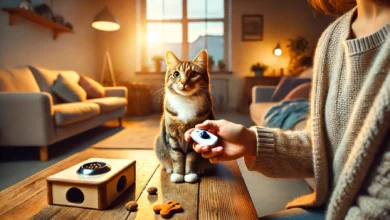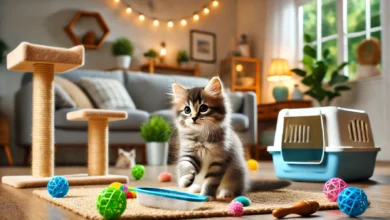Understanding Training Psychology for Cats

Training your cat can be very rewarding; the training strengthens the bond between you and your cat, and it enhances the life of your feline friend.
To embark on correct communication and effective behavior modification, understanding the concept of feline training psychology is of prime importance.
In this article, we will explain in detail the basics of feline training psychology, effective techniques, common behavioral issues, and solutions that strengthen the bond between humans and cats.
Table of Contents
The Fundamentals of Feline Training Psychology
To effectively train your cat, it’s essential to understand their natural behaviors and instincts.
Cats are inherently independent and curious creatures with instincts developed over a long period.
Recognizing these innate behaviors is the first step toward effective training.

Natural Behaviors and Instincts
Cats are predators by nature, and their behaviors often manifest this predatory instinct.
They are born to stalk, pounce, and scratch.
Understanding these behaviors and channeling them into appropriate outlets during training sessions is highly beneficial.
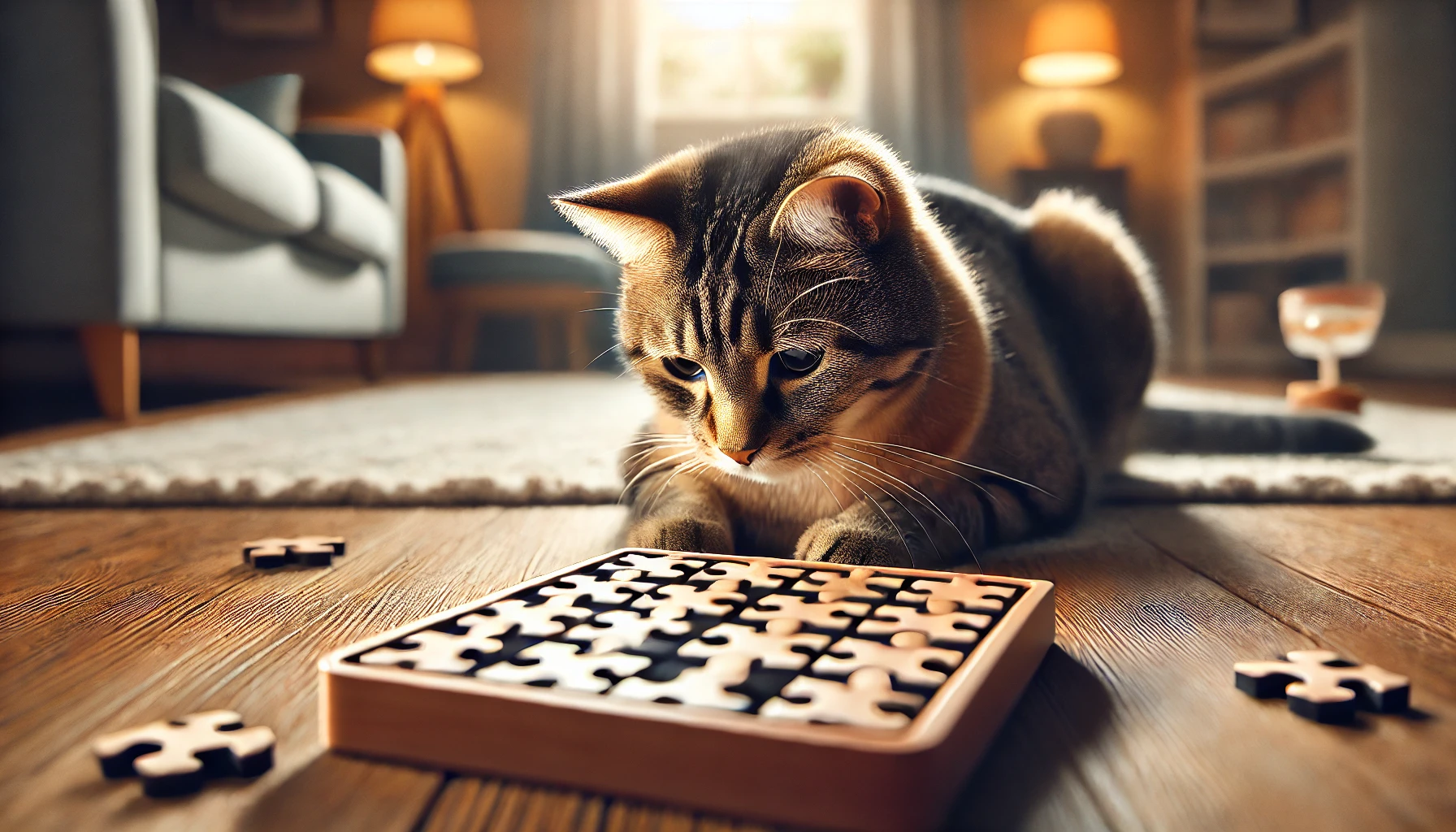
Cognitive Abilities of Cats
Contrary to common belief, cats are intelligent animals capable of learning and problem-solving.
They understand causality—knowing the cause and its consequences—and are also keen observers, capable of learning by mimicking.
Engaging their intelligence can make training both effective and enjoyable.
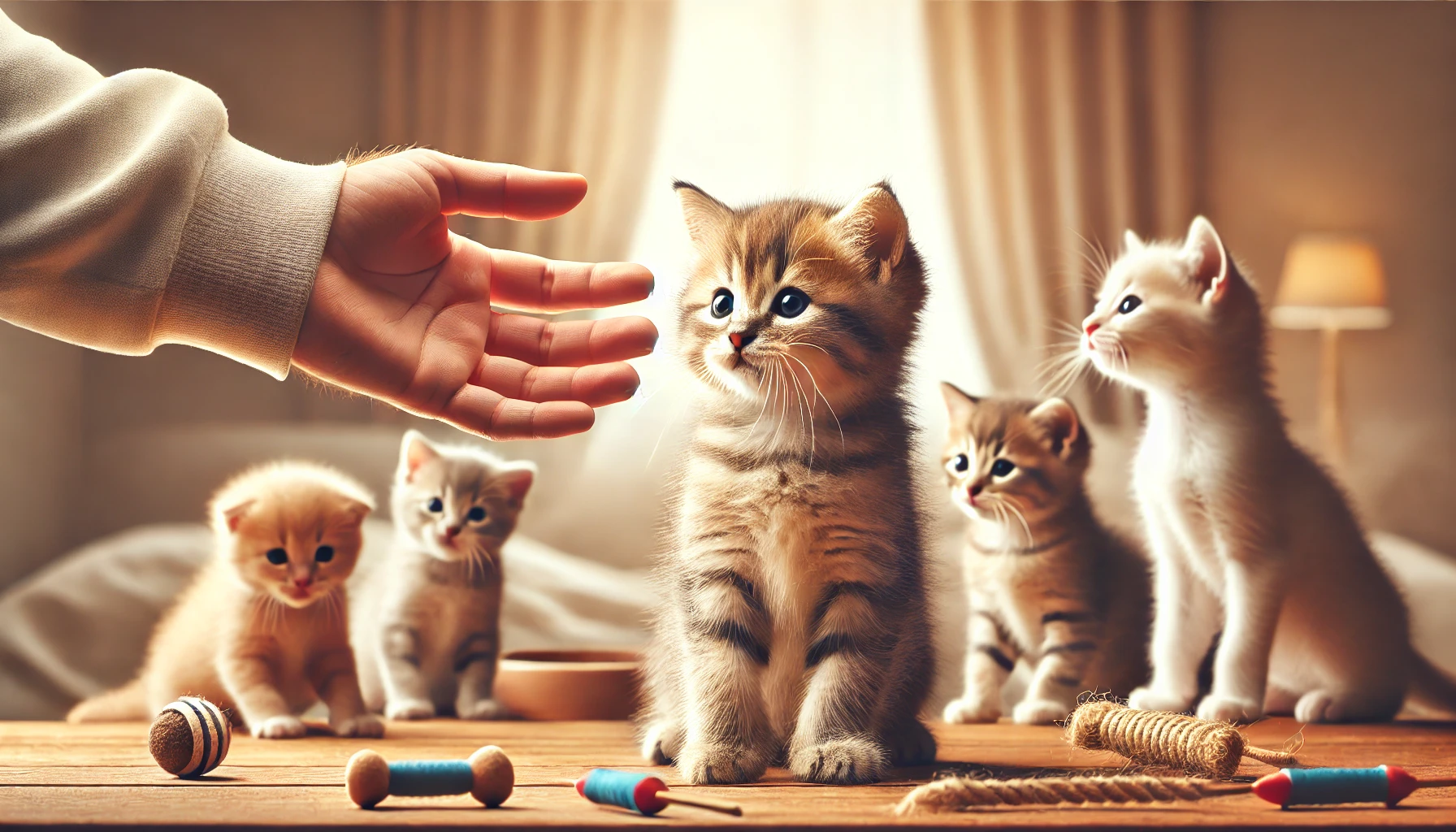
The Role of Socialization in Training
One key factor in a cat’s responsiveness to training is early socialization.
Kittens exposed to diverse environments, people, and other animals during their formative weeks tend to be more adaptable and open to learning new behaviors.
If you’re working with an adult cat, slow, positive exposure to new experiences can still increase their trainability.
By recognizing your cat’s natural behaviors, cognitive abilities, and socialization history, you create a solid foundation for effective training.
This understanding fosters a cooperative relationship based on trust, making the training process enjoyable for both you and your feline companion.
Understanding a cat’s natural behaviors and instincts is crucial for effective training. Recognizing their independence and curiosity forms the foundation of feline training psychology.

Effective Training Techniques for Cats
Training a cat in any kind of activity requires patience, consistency, and an understanding of feline behavior.
The process can indeed be enjoyable and successful for both you and your cat with the application of appropriate techniques.

Positive Reinforcement Strategies
Positive reinforcement plays a major role in effective cat training.
This method involves rewarding your cat immediately after they perform a certain desired behavior, encouraging them to repeat it.
Rewards can include:
- Treats: Bite-sized, tasty pieces of food that your cat likes.
- Affection: Gentle strokes or praise words to show delight.
- Play: Engaging in a favorite activity or playing with a preferred toy.
Rewarding desired behavior immediately after an action is crucial; consistency reinforces the relationship between action and reward.

Clicker Training: How It Works
One effective technique is clicker training, which uses a small device that makes a ‘click’ sound, marking the exact moment your cat performs the desired behavior.
This approach includes:
- Clicker Introduction: Click the device and immediately give your cat a treat to help associate the sound with a reward.
- Marking the Behavior: When your cat does what you want, click at that exact moment.
- Immediate Reward: Always follow the click with a treat to reinforce the behavior.
Over time, your cat will learn that the click signifies a reward, making it easier to shape new behaviors.

Avoiding Common Training Mistakes
When training, successful outcomes depend on avoiding common mistakes, such as:
- Inconsistency: Ensure all family members use the same commands and reward systems.
- Using Punishment: Avoid negative reinforcement, as it creates fear and anxiety. Focus on positively reinforcing good behaviors.
- Long Sessions: Keep training sessions short, ideally between 5-10 minutes, as this is the maximum time a cat will focus on one activity.
By utilizing these effective training methods, you can create a positive learning environment where your cat wants to learn desired behaviors, strengthening the bond between you and your feline companion.
Positive reinforcement techniques like treats, affection, and play make training enjoyable for your cat, strengthening your bond and ensuring a positive learning environment.

Training for Behavioral Issues
Understanding and addressing the behavioral issues of cats is necessary to keep the household in harmony.
By identifying the causes of certain behaviors and applying proper training techniques, you can manage undesirable actions and encourage positive changes.

Aggression and Fear Management
Aggressive and fearful behaviors in cats can stem from improper socialization, traumatic experiences, or environmental stressors.
To address these behaviors:
- Identify Triggers: Observe your cat to determine what brings on aggression or fear.
- Gradual Desensitization: Gradually expose your cat to the trigger in a controlled manner, rewarding calm behavior to create positive associations.
- Provide Safe Spaces: Ensure your cat has quiet areas to retreat to when they need to feel secure.
- Consult Professionals: If aggression persists, seek advice from a veterinarian or certified animal behaviorist.
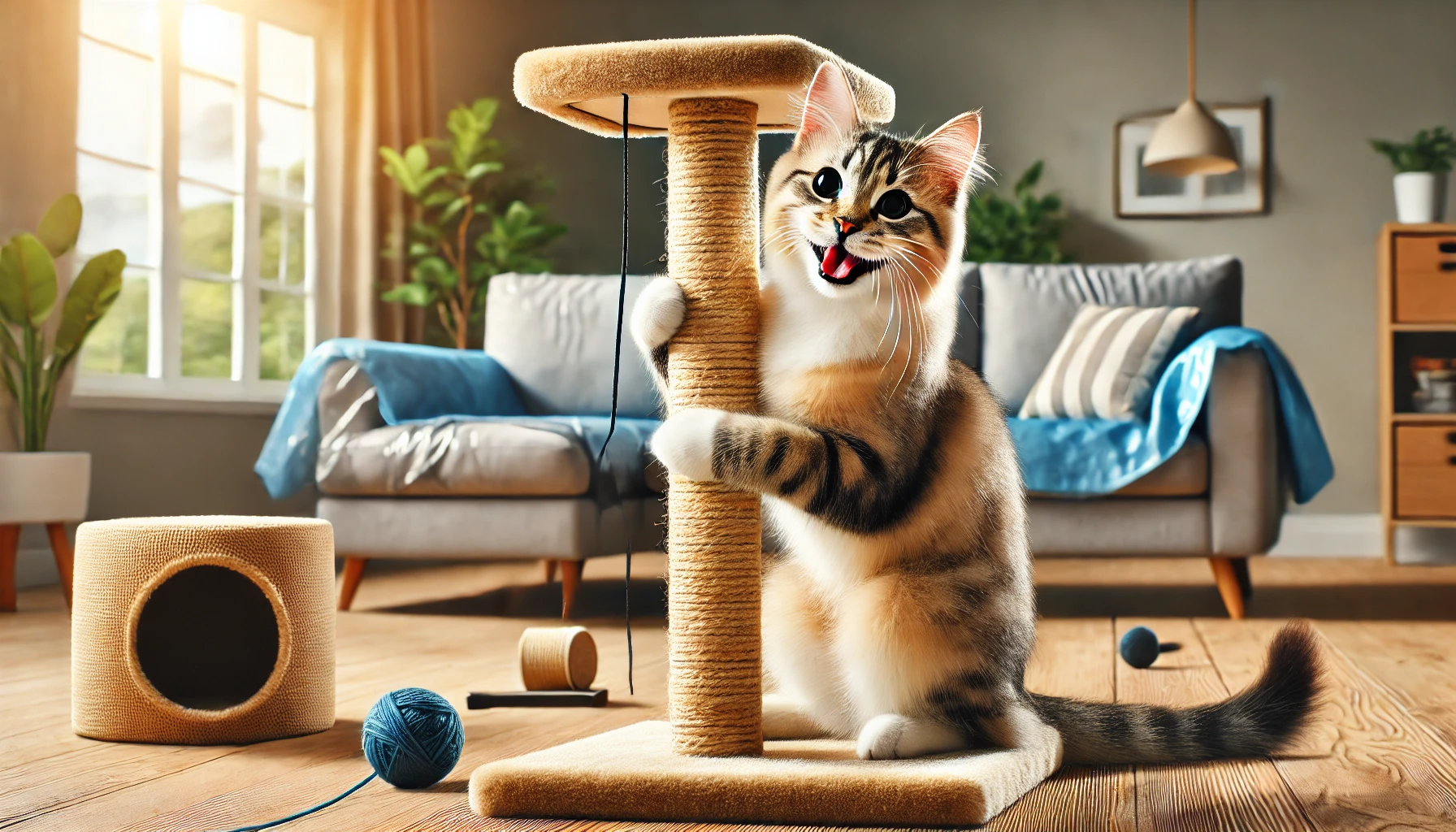
Avoiding Destructive Scratching
Scratching is a natural behavior for cats, used to mark territory and maintain claw health.
To prevent damage to furniture:
- Provide Appropriate Scratching Posts: Place sturdy posts wrapped with materials like sisal in areas your cat frequents.
- Use Positive Reinforcement: Reward your cat with treats or affection immediately after they use the scratching post.
- Protect Furniture: Apply deterrents, like double-sided tape, on furniture to discourage scratching.
- Regular Nail Trimming: Regularly trim your cat’s claws to reduce the potential for damage.
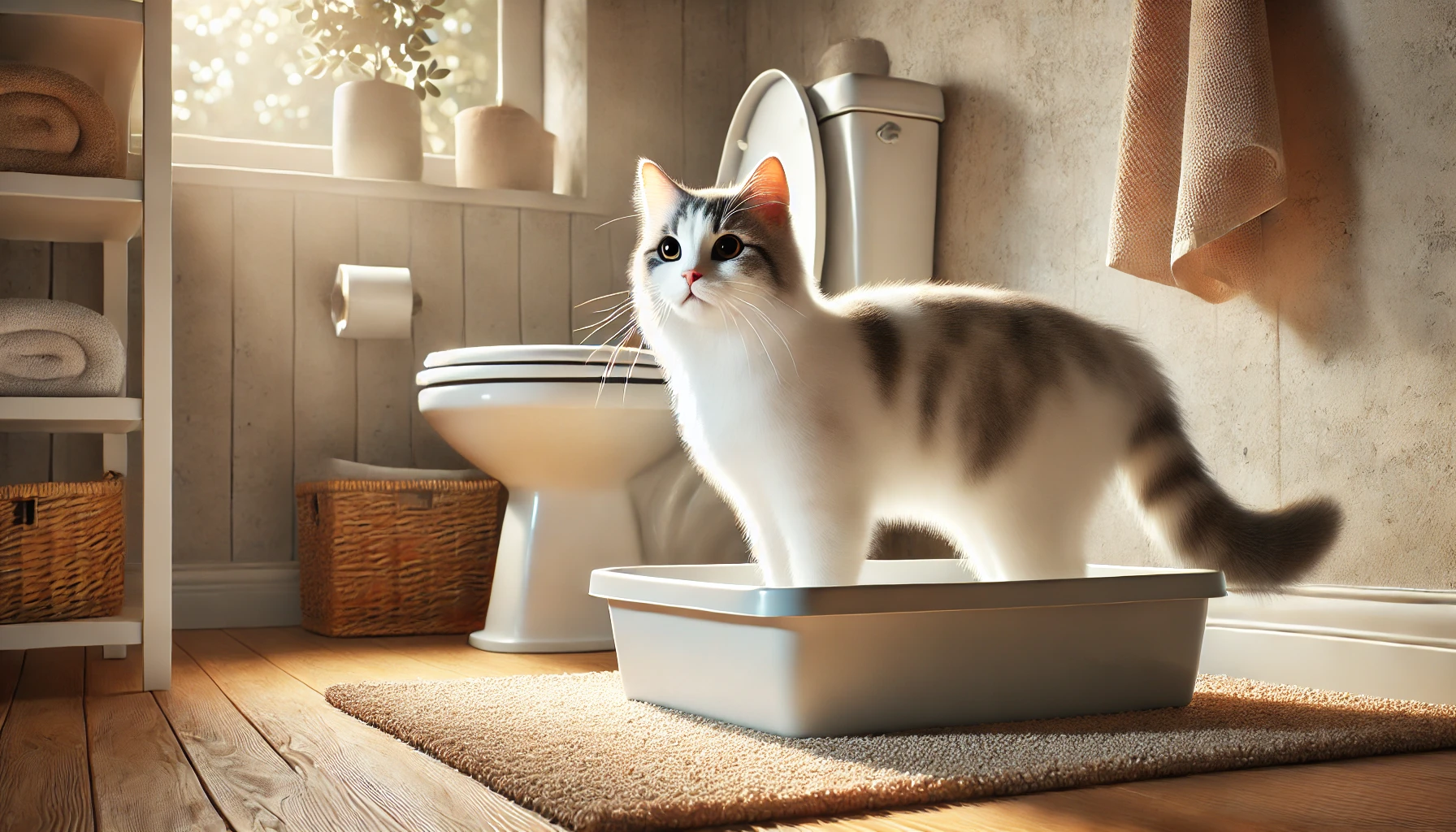
House-Soiling Problems
Inappropriate elimination can be frustrating and may indicate underlying issues.
To address litter box problems:
- Maintain Cleanliness: Scoop the litter box daily and replace the litter regularly to ensure cleanliness.
- Appropriate Placement: Place the litter box in a quiet, accessible location, away from your cat’s food and water dishes.
- Provide Multiple Boxes: A good rule of thumb is one litter box per cat, plus one extra, to prevent territorial issues.
- Consult a Veterinarian: Rule out medical conditions that may contribute to inappropriate elimination.
By directly addressing these behavioral issues through targeted training and environmental adjustments, you can create a positive and stress-free relationship with your cat.
Addressing behavioral issues like aggression or scratching requires patience and the right techniques, including safe spaces, gradual exposure to triggers, and rewarding calm behavior.

Strengthening the Human-Cat Bond through Training
Training your cat does not merely involve teaching tricks; it is one of the most effective methods for developing a healthy relationship between you and your cat.
Through regular and positive interactions, you can establish trust, improve communication, and enhance the quality of life for both of you.

Building Trust and Communication
Establishing trust is the foundation of a strong relationship.
To develop your cat’s trust, you should:
- Give Them Space: Allow your cat to approach you voluntarily, without compulsion or force, so they feel secure in their own time.
- Use Positive Reinforcement: Follow desired behaviors with treats, affection, or playtime to encourage repetition.
- Be Consistent: Set a pattern of regular feeding, play, and training sessions to create a sense of security.
Effective communication with your cat involves understanding their body language and vocalizations.
Observe cues like purring, tail position, and ear orientation to gauge their comfort level and mood.
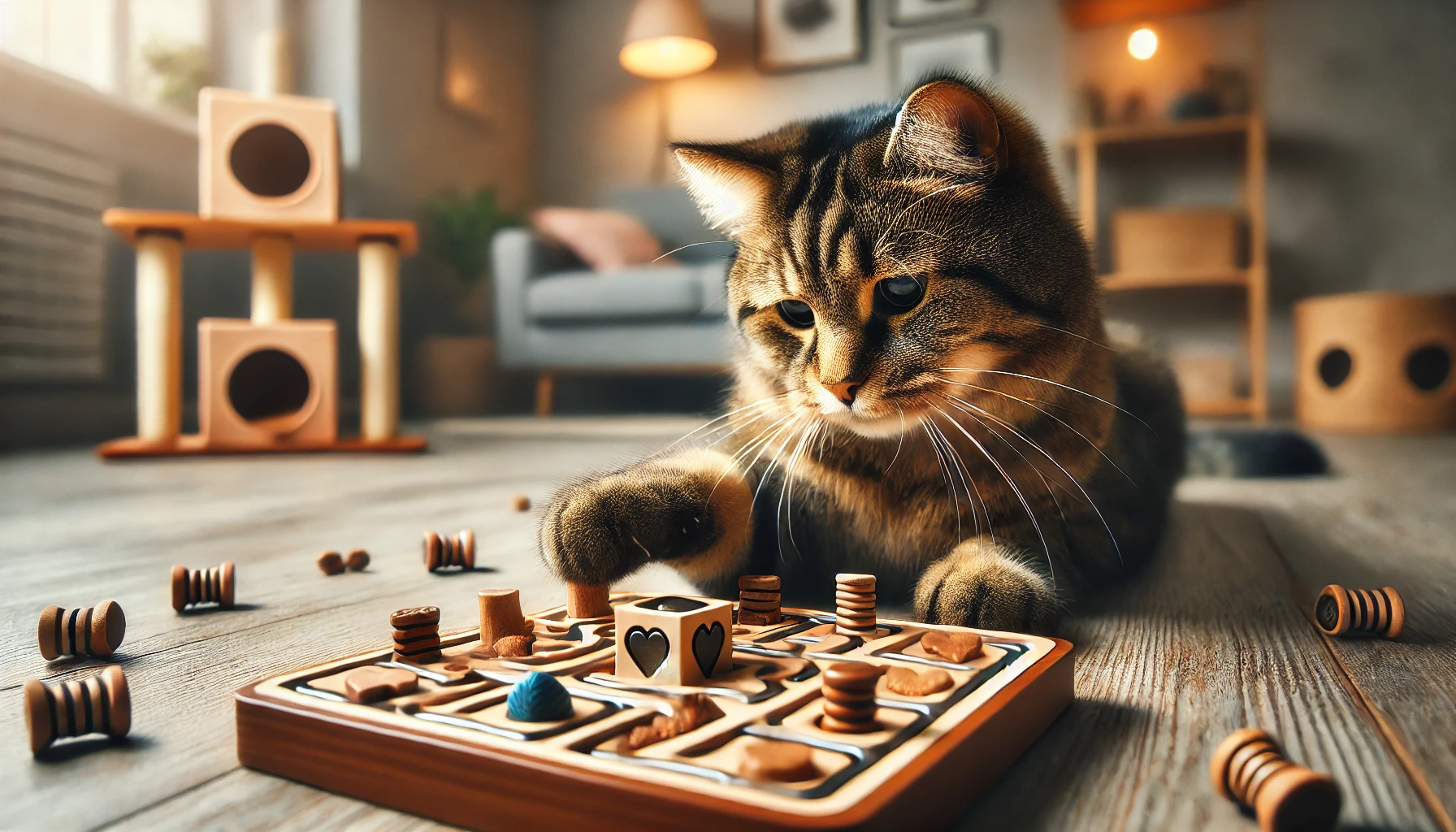
Activities to Provide Mental Stimulation
Engaging your cat in enrichment activities keeps their mind active and further strengthens your relationship.
Consider the following:
- Active Play: Engage your cat in active play using toys like feather wands or laser pointers that simulate prey.
- Puzzle Feeders: Use food-dispensing toys to challenge your cat to work for their meals.
- Training Sessions: Teach new tricks or commands to keep your cat cognitively stimulated.
Regular enrichment prevents boredom and minimizes the chances of behavioral problems.

Benefits of Regular Training Schedules
Implementing regular training schedules offers several advantages:
- Behavioral Improvement: Regular training helps address and prevent undesirable behaviors.
- Enhanced Communication: Training fosters a mutual understanding between you and your cat.
- Strengthened Bond: Shared activities and achievements reinforce your relationship.
Consistency is key to success; short, frequent training sessions, even a few minutes a day, are more effective than long, infrequent sessions.
Focusing on trust-building activities, mental stimulation, and consistent training reinforces the human-cat bond, leading to a more rewarding and harmonious relationship with your feline friend.
Building trust through consistent positive reinforcement and engaging activities leads to a rewarding relationship. Understand your cat’s body language to improve communication.
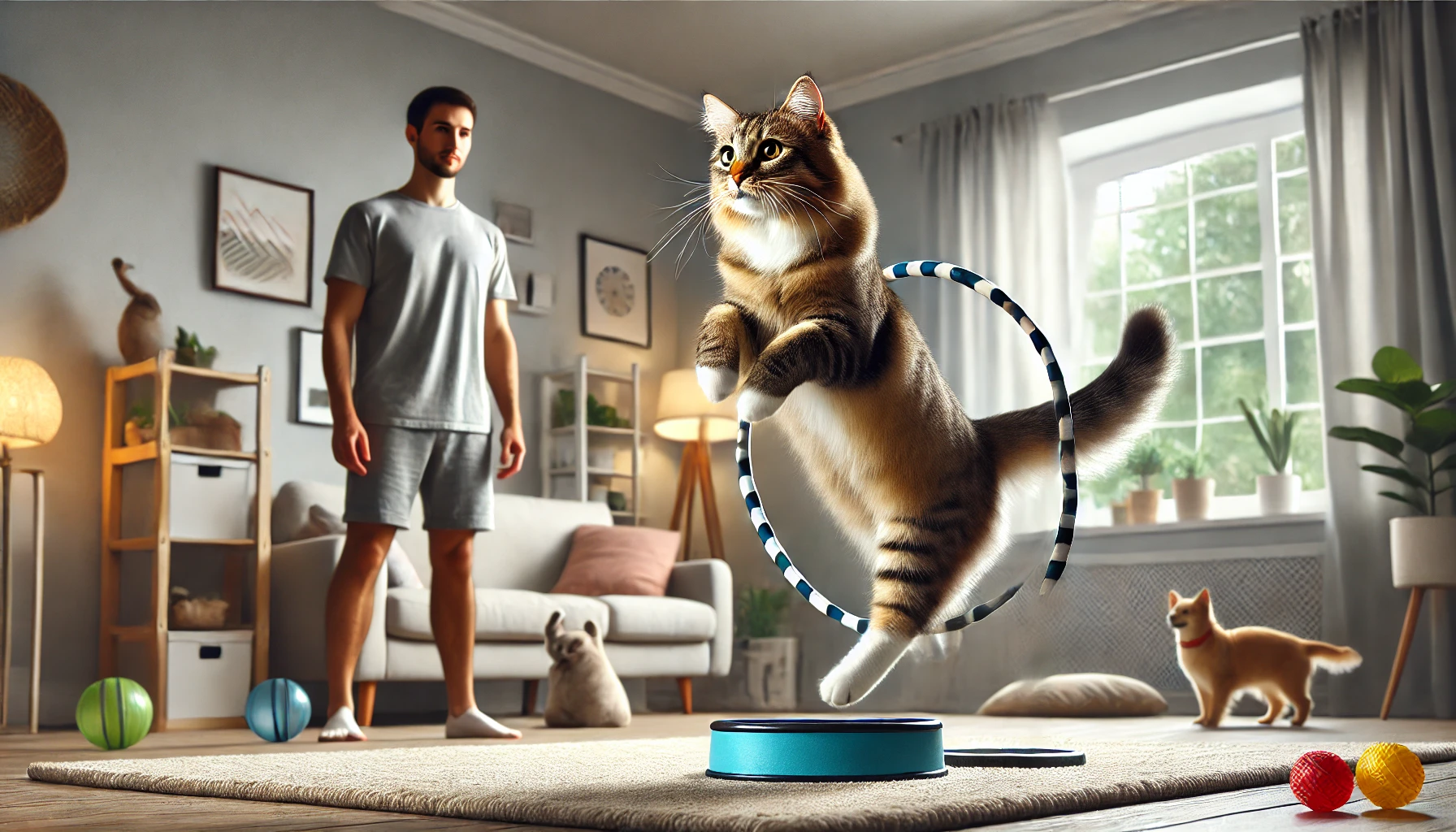
Advanced Cat Training Techniques
Once your cat has mastered basic commands, advanced training methods can be introduced to challenge your cat’s mind further and strengthen the bond between you.
These techniques serve not only to enrich your cat mentally but also to make them more adaptive and responsive.

Clicker Training for Advanced Behaviors
Clicker training is effective for teaching advanced behaviors by marking desired actions with a distinct sound.
To use this method effectively:
- Introduce the Clicker: Associate the clicker sound with a treat, helping your cat learn that a click signifies a reward.
- Breaking Down Behaviors: Break complex behaviors down into smaller, manageable steps, rewarding each successful attempt.
- Gradual Progression: Gradually increase the difficulty, ensuring your cat has mastered each step before moving on to the next.
Consistency and patience are essential in every clicker training session.
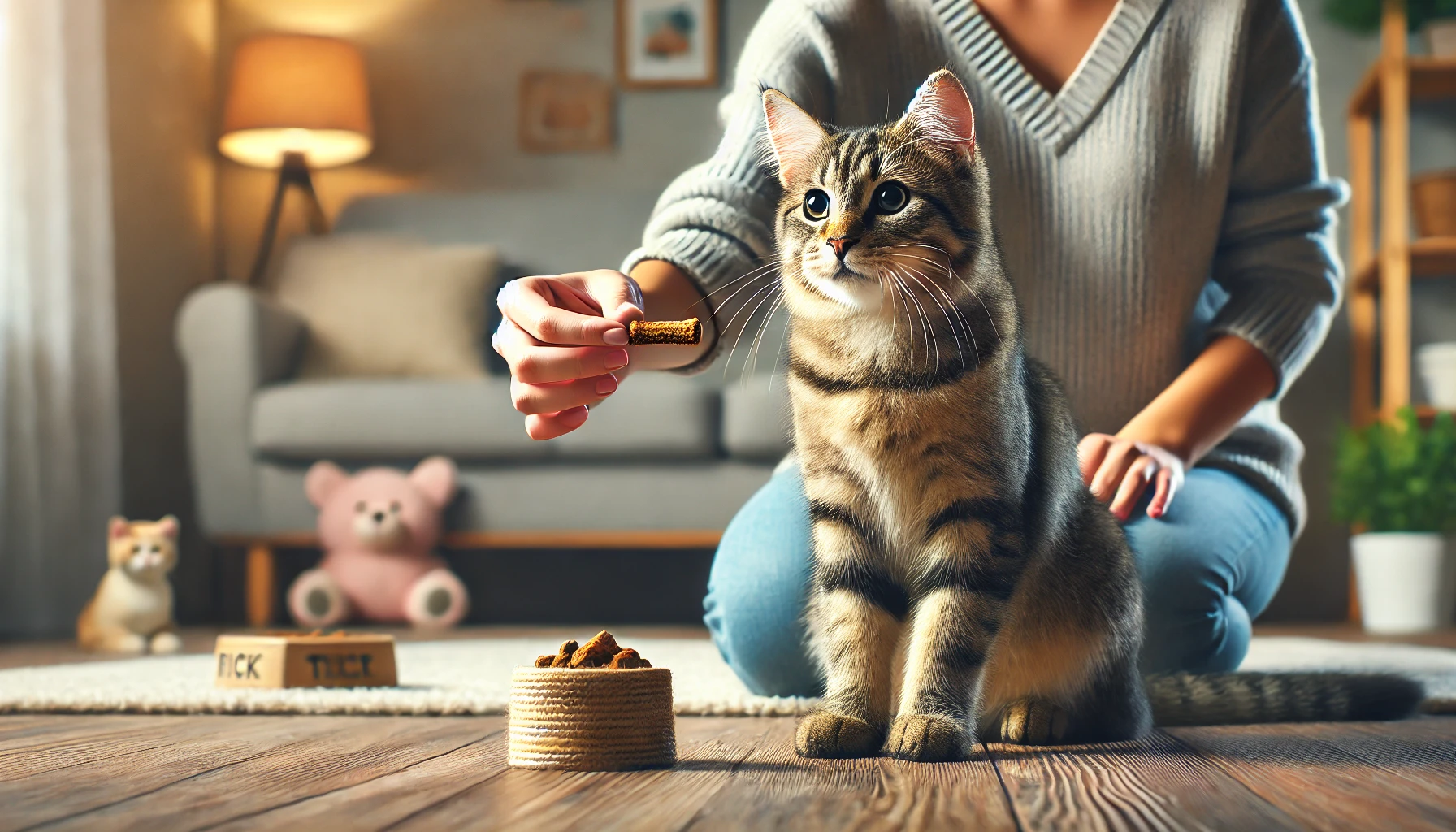
How to Teach Your Cat Tricks and Commands
Teaching your cat new tricks and commands can be enjoyable for both of you.
Try teaching the following:
- High-Five: Hold a treat above your cat’s head to encourage them to reach up with their paw. Reward the action and gradually introduce a verbal cue.
- Fetch: Toss a favorite toy a short distance. If your cat brings it back, immediately offer praise and a treat to reinforce the behavior.
- Leash Training: Acclimate your cat to wearing a harness indoors before introducing a leash, allowing them to explore under supervision and become comfortable with the restraint.
Always use positive reinforcement and keep training sessions short to maintain your cat’s attention.

Using Hand Signals and Verbal Cues
Enhance communication with your cat by incorporating hand signals and verbal cues.
To implement this effectively:
- Pair Signals with Actions: Use specific hand movements or words to reinforce desired behaviors during training.
- Consistent Use: Consistently use the same signals and cues to prevent confusion.
- Reward Reinforcement: Reward your cat immediately after they respond to a cue, strengthening their understanding of the association.
Over time, your cat will learn to respond to both visual and auditory commands, improving communication.
By incorporating these advanced training techniques, your cat will receive mental stimulation, your bond will be strengthened, and positive behaviors will lead to a more rewarding relationship with your feline companion.
Advanced techniques like clicker training and using hand signals challenge your cat’s intelligence, making training an enriching experience for both of you.
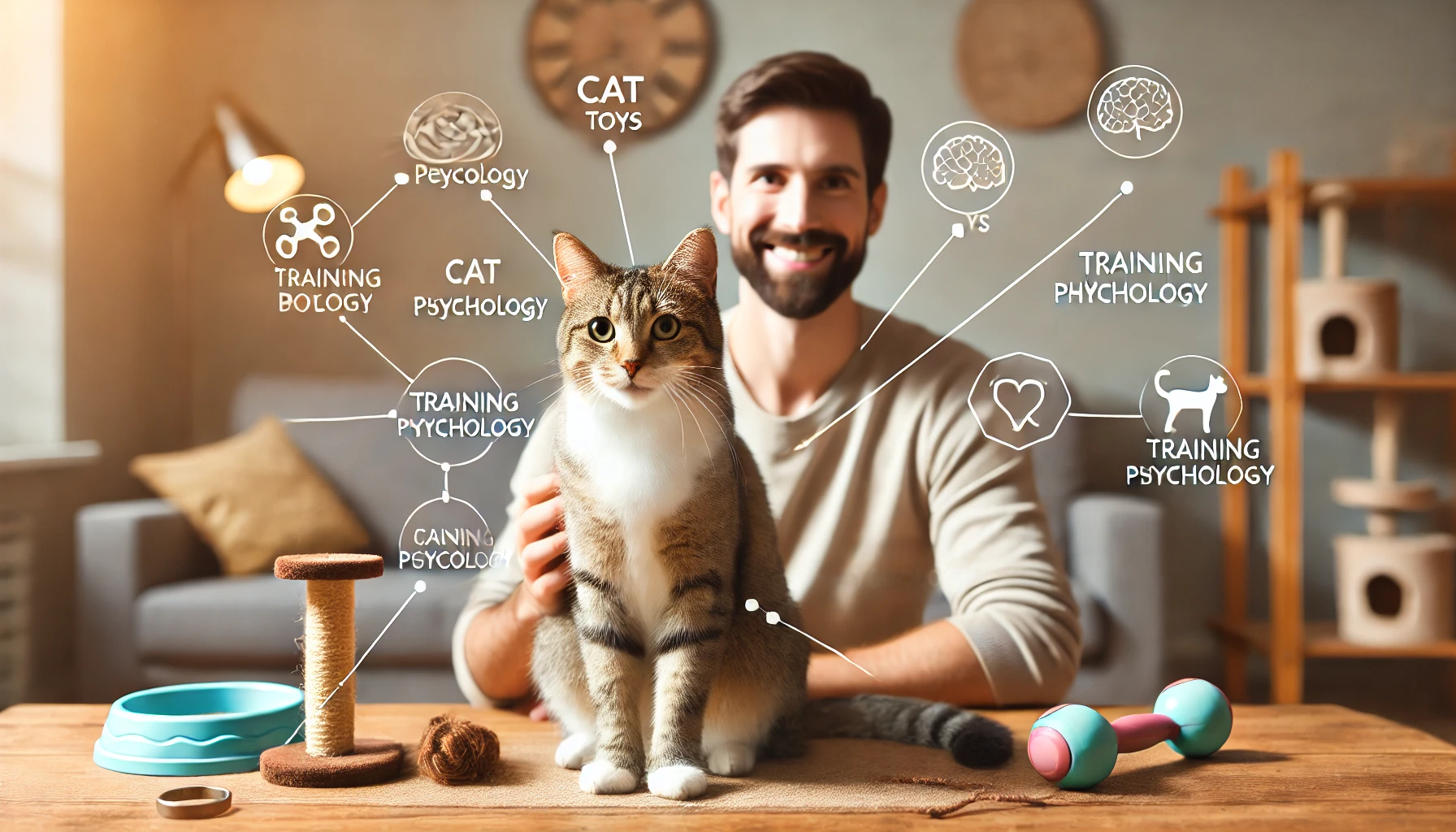
Conclusion: Mastering Training Psychology for Your Cat
Understanding and applying training psychology in cats is not only a journey into teaching good behaviors but also a way of strengthening the bond between you and your feline friend.
By focusing on every aspect of training—from foundational psychology to advanced techniques—you ensure your cat is in an environment where they feel safe, are stimulated, and become more attached to you.
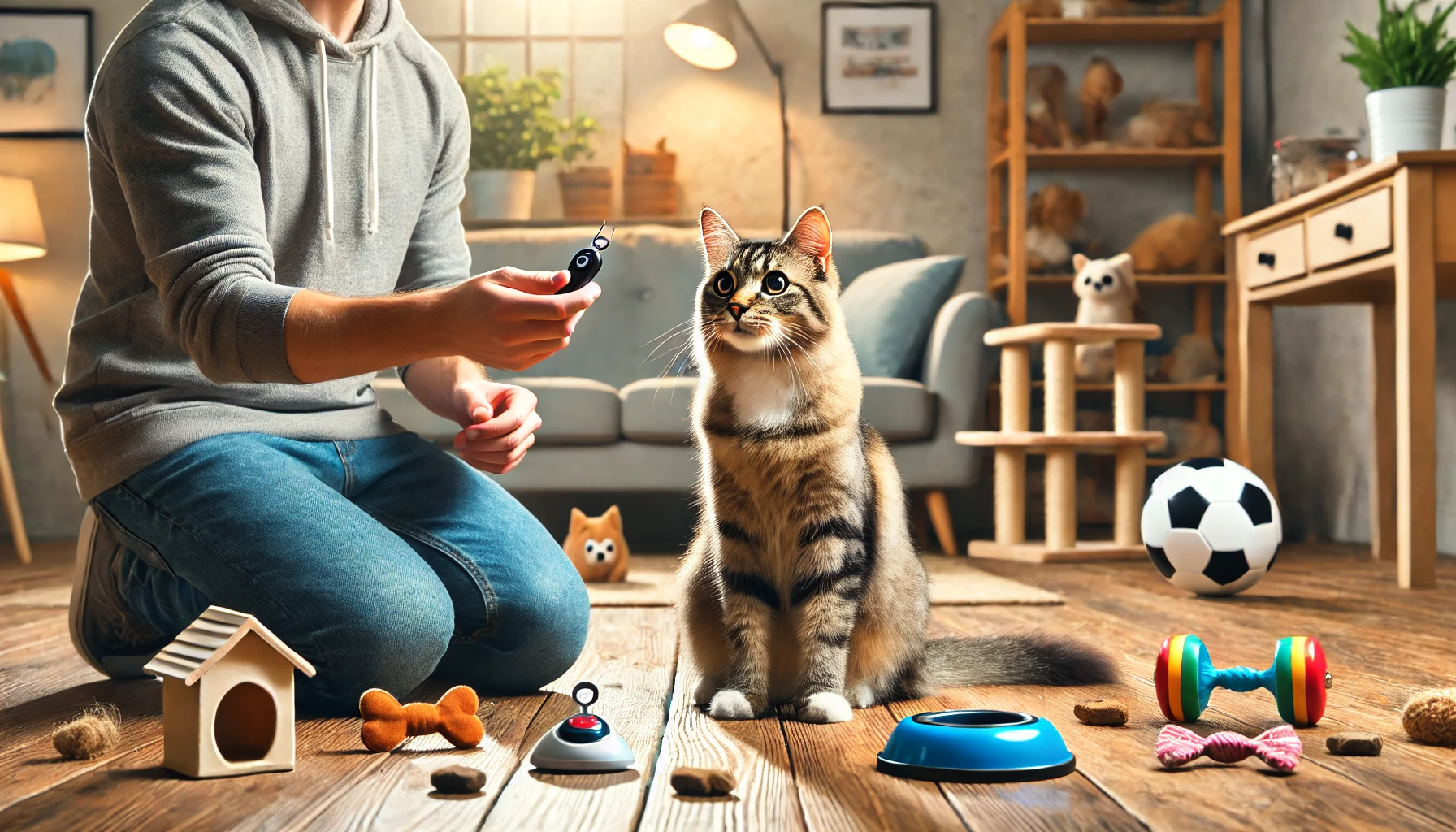
The Basics of Training Psychology
The basis of successful training lies in understanding your cat’s natural instincts, cognitive abilities, and socialization patterns.
Recognizing and respecting these natural behaviors enables you to communicate and work with them effectively.
Through this understanding, trust is established, laying the foundation for successful training.

Effective Techniques for Positive Results
Positive reinforcement and methods like clicker training are powerful tools for creating a constructive learning environment.
These techniques encourage your cat to repeat positive behaviors, and by avoiding common mistakes, you maintain a consistent and positive approach.
Remember to:
- Reward good behavior immediately: This helps your cat understand they have done something positive.
- Focus on short, consistent sessions: Keep sessions brief to hold your cat’s interest.
- Avoid negative reinforcement: This can cause anxiety or fear, undermining training efforts.

Addressing Behavioral Challenges
Cats may exhibit behavioral issues like aggression, fear, or inappropriate scratching due to underlying causes.
Addressing these issues through training psychology enables you to find solutions that respect your cat’s natural needs.
Whether identifying triggers or providing safe spaces, these techniques help you manage and improve your cat’s behavior.
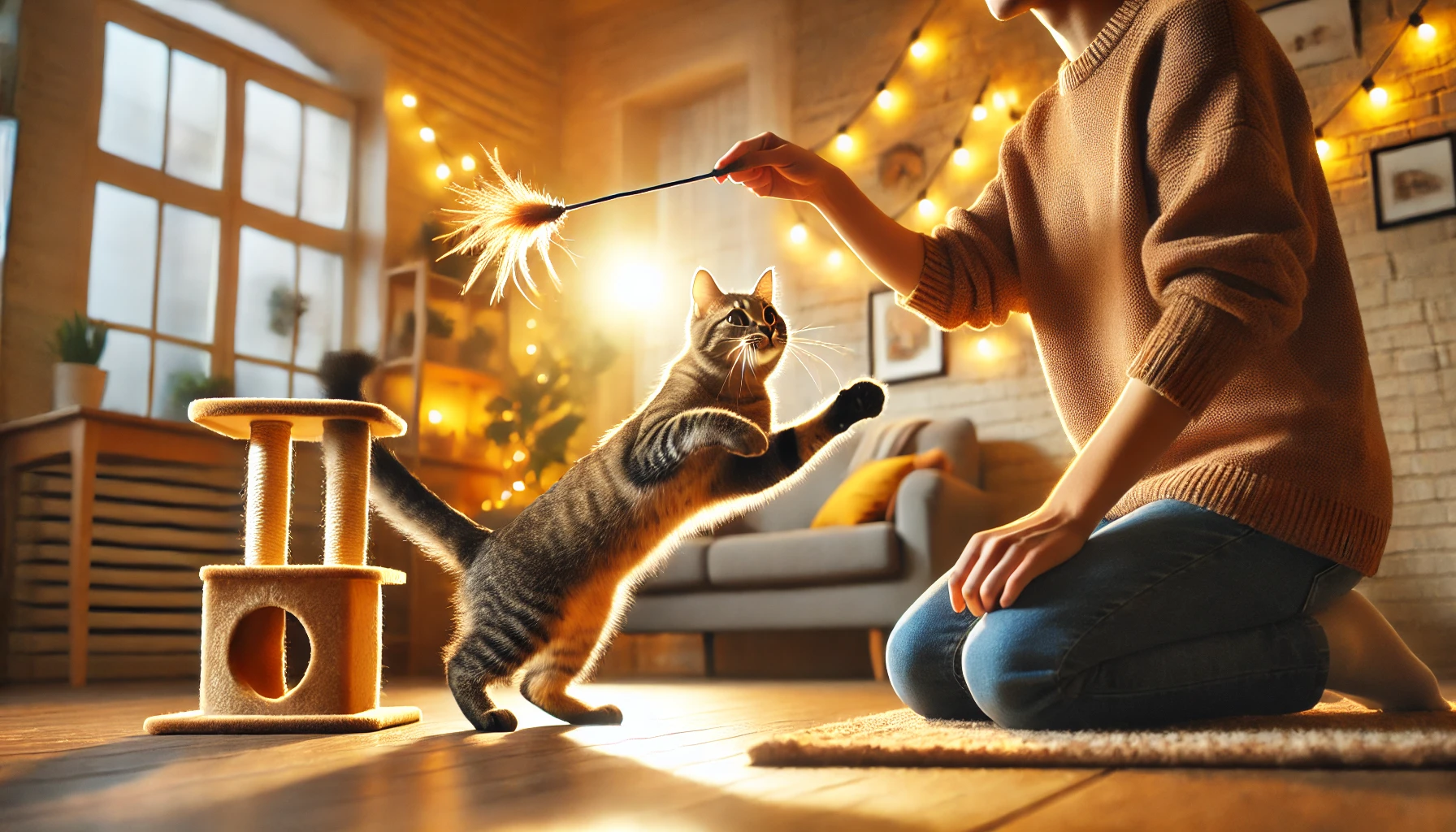
Training to Strengthen Your Bond
Training goes beyond teaching tricks; it is a meaningful way to enhance the bond with your cat.
Activities like high-fives, fetching, and even leash training foster interaction and mutual enjoyment.
Consistently engaging in training and play reinforces a trusting and rewarding relationship with your cat.

Advanced Training for Mental Enrichment
Advanced training techniques provide ongoing mental stimulation, keeping your cat’s mind active and engaged.
Techniques such as clicker training, hand signals, and complex commands challenge your cat’s intelligence and adaptability, making their life more fulfilling.
In summary, applying training psychology for cats offers numerous benefits: promoting good behavior, improving communication, strengthening bonds, and enhancing mental well-being.
These techniques are effective tools for building a secure, comfortable, and enriching life with your feline companion.
Embrace these strategies to enjoy a harmonious relationship with your cat.
Mastering training psychology strengthens the bond between you and your cat. With patience and consistency, training becomes a way to communicate, create trust, and enrich your cat’s life.

Frequently Asked Questions about Cat Training Psychology
Understanding the intricacies of cat training psychology can be a bit complex.
Here are some common questions and concise answers to guide you in effectively training your feline friend.
Can all cats be trained through positive reinforcement?
Yes, cats can be positively trained by anyone.
In this approach, desired behaviors are rewarded, making it a strategy suitable for all feline personalities and ages.
How long does it take to train a cat?
The time varies depending on the cat’s age, temperament, and the behavior being taught.
Consistent, short training sessions over several weeks generally yield the best results.
Will clicker training work with an older cat?
Yes, clicker training is effective for cats of any age.
With patience and continued positive reinforcement, even older cats can learn new behaviors.
What if my cat just won't listen to training?
If your cat isn’t responding, reassess your approach: use high-value rewards, keep sessions short, and maintain consistency.
Consulting a certified cat behaviorist may also help.
Can I curb my cat's aggression with training?
Training can help address aggression by identifying triggers and using desensitization techniques.
Positive reinforcement of calm behaviors over time can reduce aggressive tendencies.
How do I keep my cat from scratching up the furniture?
Provide suitable scratching posts, reward your cat for using them, and deter furniture scratching with materials like double-sided tape.
Can cats be trained to walk on a leash?
Yes, with patience and gradual acclimation to a harness and leash, many cats can learn to enjoy supervised outdoor walks.
How do I teach my cat to come when called?
Use a consistent verbal cue, reward your cat immediately when they respond, and practice regularly to reinforce the behavior.


